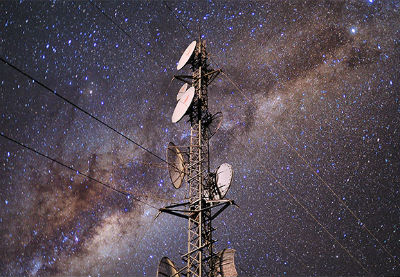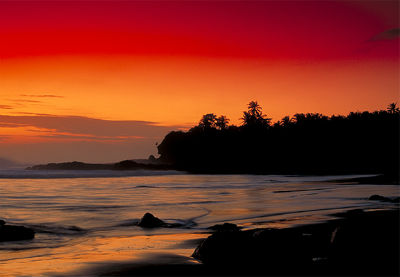Rock Solid
One of the most important components for the budding night photographer is equipment to stabilize your camera. If the camera is not placed on a stable platform image quality will be compromised by shake and vibration.More often than not you will be taking photos in lighting conditions that require the use of slow shutter speeds making hand held camera operation difficult. By using a tripod, monopod or some other device such as a clamp you can prevent camera motion blur from ruining your shot.
Shooting from a stable platform also allows you to adjust the ISO setting to the camera's base ISO value. This keeps noise at a minimum and also increases dynamic range and improves colour fidelity.

I prefer carbon fibre tripods with only three or four leg sections as this improves rigidity and therefore makes the camera less prone to vibration from wind and other sources of camera shake.
If you can't afford carbon fibre legs a set of aluminum tripod legs will do the job. Aluminum tripods are generally heavier. This is actually a good thing for night photography as it helps to improve stability, It does mean you have to carry extra weight around with you.
If you want to lug around two separate camera and tripod setups, which I frequently do for night photography, then carbon fibre is a better option. Your back will thank you!
One way to help stabilize a lighter tripod is to tether it to the ground. This has the added benefit of helping to prevent the camera being blown over by a sudden wind gust. On several occasions I have had cameras hit the deck due to wind.

You can secure the tripod by attaching one end of the occy strap using the hook or hole located on the main central column of the tripod. You then attach the other end of the tether to a tent peg which has been securely banged into the ground.


If you find yourself in a situation where you don't have access to a tripod or some other device to stabilize the camera then a fence or a rock may prove suitable to prevent the camera from moving. Put a towel or piece of clothing under the camera to allow for levelling and composing your shot. Placing the camera on a sandbag (or a sock full of sand, in a pinch) is also a solid option for camera stabilization.
Talking Heads
After you have purchased your tripod legs your next step is to buy a good quality tripod head.You should think long term and invest in a product that will go the distance. Many of the cheaper versions out there use inferior materials that aren't made to last. Do your research and read reviews on any gear you intend to purchase.
I prefer to use a ball head system like those made by Markins or Photo Clam. Ball heads allow you to make quick adjustments of the camera in all three dimensions. They also make changing from vertical to horizontal aspect shooting an easy task.


Look, But Don't Touch!
Once you have the camera locked off and stabilized and you have composed your shot its time to activate the shutter and take your photo.We want to try to minimise camera movement during the period when the shutter is open so rather than physically pressing the shutter release button on the camera it is preferable to use a cable release or remote control to trigger the camera.
You can get a wired cable release that physically attaches to the camera allowing you to activate the shutter mechanism. These are usually a simple press button style release with a locking mechanism to keep the shutter in the pressed or activated state indefinitely until you release the lock.


You can also tether the camera to a computer, tablet or smartphone. The camera connects via a USB cable or uses infrared, bluetooth or wi-fi connections to wirelessly interface with the device. This not only allows remote control of the shutter release but also monitoring of the live view image coming from the cameras imaging sensor. Very handy for composing shots in areas that are confined or difficult to access. Using a setup like this also allows you to control other settings within the camera such as focus, aperture control, ISO settings, exposure compensation and many other camera control parameters.
If you don't have a cable release system handy you can use the self timer function of your camera to activate the shutter. This will help to minimise camera shake.
Power To The People
As night photography often requires extended shutter duration you are likely to go through plenty of batteries. Carrying spares is a very good idea. You should carry at least two batteries for each camera.If you intend to do extremely long exposures or shoot time lapse then you may need to power the camera with an external battery pack or AC power supply as the batteries that come standard with your camera may only power it for one or two hours at a time.
I will look at external battery packs and AC/DC power solutions and other specialist equipment in my next article. I'll also include schematics and wiring diagrams for the construction of your own long duration battery systems.
As well as power you need to think about storage. You should carry spare memory cards. I would advise on having at least 32 Gigabytes of storage per camera.
A good-quality camera bag is another item worth having. You are best off looking for one that is the correct legal size for use as carry on luggage at airports. That way you wont have any problems if you want to take it on the plane with you.
Up Next: Specialist Gear
My next article will be the last on night photography equipment and I will focus on specialist camera equipment that you need for advanced night photography.After that I will turn my attention to shooting and post production techniques designed to get the most from your night photography ventures.
Until then, keep on shooting!
























